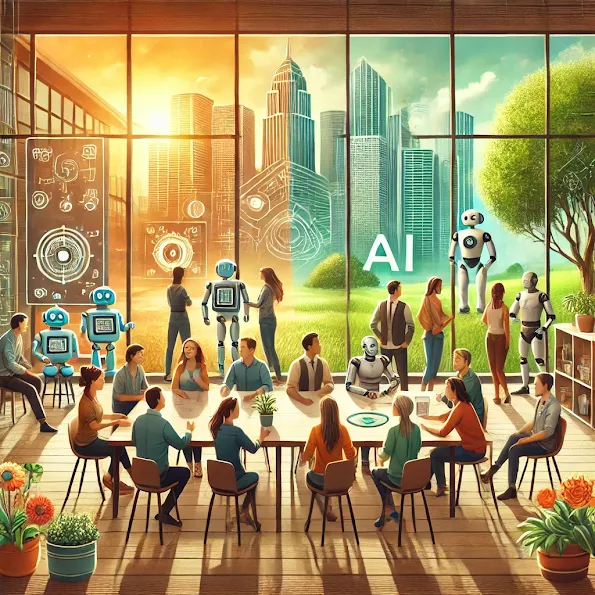AI 2034: The Future Unfolded - Part 3: Preparing for the AI Era – Solutions for Countries and Individuals
Part 3: Preparing for the AI Era – Solutions for Countries and Individuals
As we move toward 2034, proactive solutions are needed to mitigate the risks of AI while maximizing its benefits. Here’s how governments, businesses, and individuals can adapt to the AI-driven future:
1. For Governments
Education and Workforce Development
- Solution: Governments must revamp education systems to include AI literacy from an early age and focus on STEM skills. Additionally, countries like the USA, India, and the UK should invest heavily in lifelong learning and reskilling programs to prepare workers for the transition.
- Example: Singapore has implemented its "SkillsFuture" program to provide training grants to help workers upskill for the future job market, setting a strong example for other nations.
Implement Social Safety Nets
- Solution: Countries like the USA and UK should consider introducing or expanding Universal Basic Income (UBI) or unemployment benefits to support those displaced by AI. This will provide a financial cushion while workers reskill and adapt.
- Example: Pilot UBI programs in countries like Finland and Canada have shown promise in reducing economic insecurity and fostering innovation.
Regulatory Oversight for AI Ethics
- Solution: Governments must establish clear, transparent regulations on AI use to ensure fairness, transparency, and accountability. AI ethics boards should be created to oversee its development and usage.
- Example: The European Union’s “AI Act” aims to regulate high-risk AI applications, focusing on ensuring safety, privacy, and human rights, which could serve as a global standard.
2. For Businesses
Ethical AI Development
- Solution: Businesses should prioritize transparency in AI algorithms and ensure diversity in the teams developing these technologies to mitigate biases.
- Example: Google’s AI ethics team is actively working on creating guidelines for fair and responsible AI use, ensuring inclusivity in AI solutions.
Invest in Reskilling Employees
- Solution: Businesses must invest in upskilling and reskilling programs to prepare their workforce for new AI-driven roles.
- Example: Amazon has committed $700 million to upskill 100,000 of its workers in new technical skills by 2025, recognizing the need to prepare for AI-driven changes.
3. For Individuals
Lifelong Learning and Adaptability
- Solution: Individuals must embrace lifelong learning and continuously upgrade their skills to remain competitive in an AI-driven job market. Courses in AI, machine learning, and data science are essential for future job security.
- Example: Platforms like Coursera and Udemy offer accessible courses on AI and related skills, helping individuals stay ahead of technological changes.
Focus on Human-Centric Skills
- Solution: Soft skills such as creativity, critical thinking, and emotional intelligence will remain valuable in the age of AI. Workers should focus on developing these areas, which are harder for machines to replicate.
- Example: Leaders in innovation, like Tesla and SpaceX, emphasize creativity and problem-solving abilities in their hiring processes, showcasing the importance of these skills in a tech-heavy world.
4. Sustainability and Ethical AI Use
- Solution: Individuals can support and advocate for sustainable AI development by opting for companies and services that prioritize green AI practices and data privacy.
- Example: Microsoft has committed to becoming carbon negative by 2030, and consumers can push for more companies to adopt environmentally conscious practices in their AI usage.
Conclusion
By 2034, artificial intelligence will have reshaped nearly every aspect of society, from healthcare to transportation and beyond. While AI offers immense potential for progress, it also presents serious risks such as job displacement, ethical challenges, and privacy concerns. However, with the right strategies in place—education, regulatory oversight, and a focus on upskilling—countries, businesses, and individuals can not only mitigate these risks but also thrive in the AI-driven future. The time to act is now.




Comments